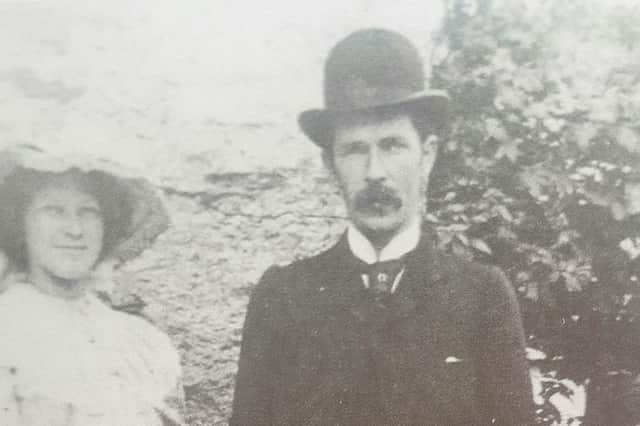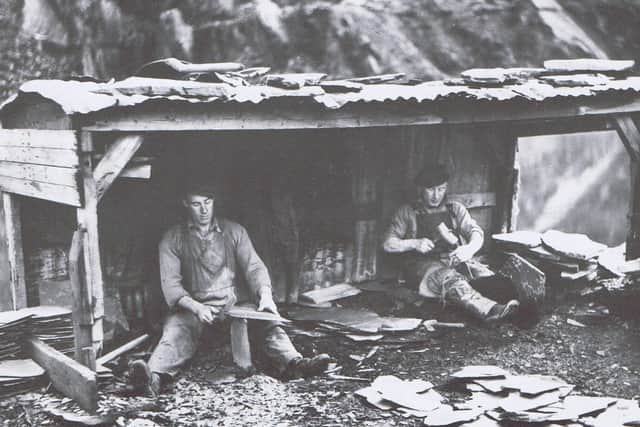The hero Highland doctor and the quarry men who striked to save him


Such was the regard of Dr Lachlan Grant that his ‘tyrranical’ dismissal from his job as medical officer at Ballachulish Quarry Company sparked an unprecedented industrial dispute that led men to leave their homes to find new employment.
But still, they supported him.
Catriona Davidson, curator at Glencoe Folk Museum, said: “The workers viewed Dr Grant as ‘one of them’ and that he genuinely cared and tried to make a difference.


Advertisement
Hide AdAdvertisement
Hide Ad“He had grown up in the area and many will have remembered him as a popular, active and curious boy, he was a huge shinty supporter – the local team consisted mostly of quarry workers - he spoke Gaelic fluently, and was passionate about preserving Gaelic and Highland heritage. He also risked his career fighting for worker’s rights.”
Dr Grant, who was originally from Johnstone but grew up in Ballachulish, returned to the area to improve the medical care of his people after studying in Edinburgh and Glasgow.
Then an area of scarce population, wild landscape and very few roads, Dr Grant moved back to Ballachulish in 1900 to take up the post at the quarry.
At the time, the workforce included young boys and serious injuries, illnesses and even fatalities were not uncommon, acccording to a publication by Glencoe Folk Museum.
Wages were poor with workers lives inextricably linked to their employers, with even their food to be bought from the firm who charged their employees for the powder and coals required to do their jobs.
When Dr Grant reported on the unsanitary living conditions of the workmen, the Quarry Company attempted to dismiss him in July 1902 and ban him from working in the area.
The quarry men, whose salary was docked to pay the doctor, mobilised in an attempt to keep him.
A meeting of workers in August 1902 was arranged for the village hall – but the numbers who came out in force to support Dr Grant were so big that it was moved outside so the gathered crowds could be addressed in full.
Advertisement
Hide AdAdvertisement
Hide AdIt was with “pain and indignation” that they reacted to his dismissal with the workers expressing their “strong determination to have every legitimate means in our power to support Dr Grant”.
Workers agreed to fund the doctor themselves and refused to pay the fee to their employer which until then had covered his salary.
It was a move that cast the die in an extraordinary battle over the doctor’s right to work that would end up in the Court of Session with the case used to highlight the poor working conditions of the quarry men.
It was written into Dr Grant’s contract that should his employment cease, he could no longer work in the district with this point fought by the medic in court as he sought to overturn his dismissal.
Only one of four judges backed the doctor with the ruling in favour of the company fuelling the firm's punishment of the workers, in what became known as the Ballachulish Lock Out.
The strike and lock out of workers who refused to accept new working conditions lasted 18 months with at least 120 men leaving for other slate quarries in Toberonochy, Balvicar and Aberfoyle with others taking up jobs in the railway.
"The fidelity of the men in supporting their medical officer in his protest against a tyrannical dismissal is one of the most striking and satisfactory features of the affair, and their conduct cannot fail to impress the directors with a better sense of the unworthiness of their behaviour,” a report in medical journal Truth said.
By the end of 1903, the directors of the company signed an agreement allowing Dr Grant to return to his position.
Advertisement
Hide AdAdvertisement
Hide AdDr Grant’s views on social reform became well known and it is perhaps unsurprising that he advocated a system of publicly funded health care.
In 1912, he contributed to the Dewar Commission Report, an investigation into medicine and conditions in the Highlands which set out a compelling case for an overhaul of healthcare.
His crucial evidence led to the establishment of the Highlands and Islands Medical Service, considered to be the precursor of the NHS.
A message from the Editor:Thank you for reading this story on our website. While I have your attention, I also have an important request to make of you.With the coronavirus lockdown having a major impact on many of our advertisers - and consequently the revenue we receive - we are more reliant than ever on you taking out a digital subscription.Subscribe to scotsman.com and enjoy unlimited access to Scottish news and information online and on our app. With a digital subscription, you can read more than 5 articles, see fewer ads, enjoy faster load times, and get access to exclusive newsletters and content. Visit https://www.scotsman.com/subscriptions now to sign up.
Our journalism costs money and we rely on advertising, print and digital revenues to help to support them. By supporting us, we are able to support you in providing trusted, fact-checked content for this website.
Joy Yates
Editorial Director